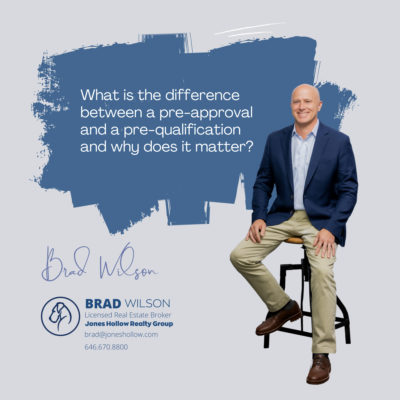 What is Pre-Approval?
What is Pre-Approval?
Pre-approval is similar to a pre-qualification in that the lender is still reviewing your financial information to determine your eligibility for a mortgage as well as how much you can afford. However, a pre-approval is much more formal and involves utilizing verified information to make that estimate. When giving pre-approval, a lender pulls and reviews a potential borrower’s credit report and score they also collect documents such as tax returns, bank statements, W-2’s, and pay stubs. One big advantage of a pre-approval is that you get a letter with the actual amount you qualify for based on the documentation provided.
What is Pre-Qualification?
Pre-qualification is a method of figuring out how much you may be able to borrow. When seeking pre-qualification, a client provides basic financial information to the lender who then uses that to make an estimate on how much a potential borrower can afford. The main aspect that sets pre-qualification apart is that most of the information is provided verbally and unverified.
So What’s the Difference?
The main difference between pre-qualification and pre-approval is, pre-approval requires verification of financial documents and provides a letter of pre-approval, it’s a much more accurate and credible indication of what you can afford compared to pre-qualification. This means that being pre-approved can give you a strong leg-up on the competition when making an offer on a house.
Why Should You Get Approved?
Before searching for a home, it’s important to be pre-qualified or pre-approved so you and your real estate agent know exactly what you can afford. When you’re ready to make an offer, having a pre-approval means the seller will be more likely to trust and accept your offer – plus, your mortgage process will go smoother and faster.

